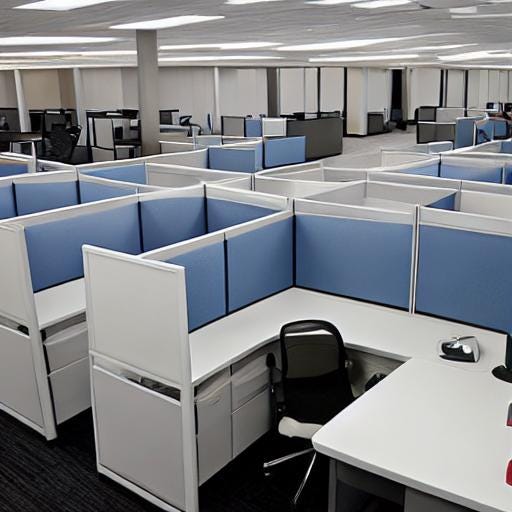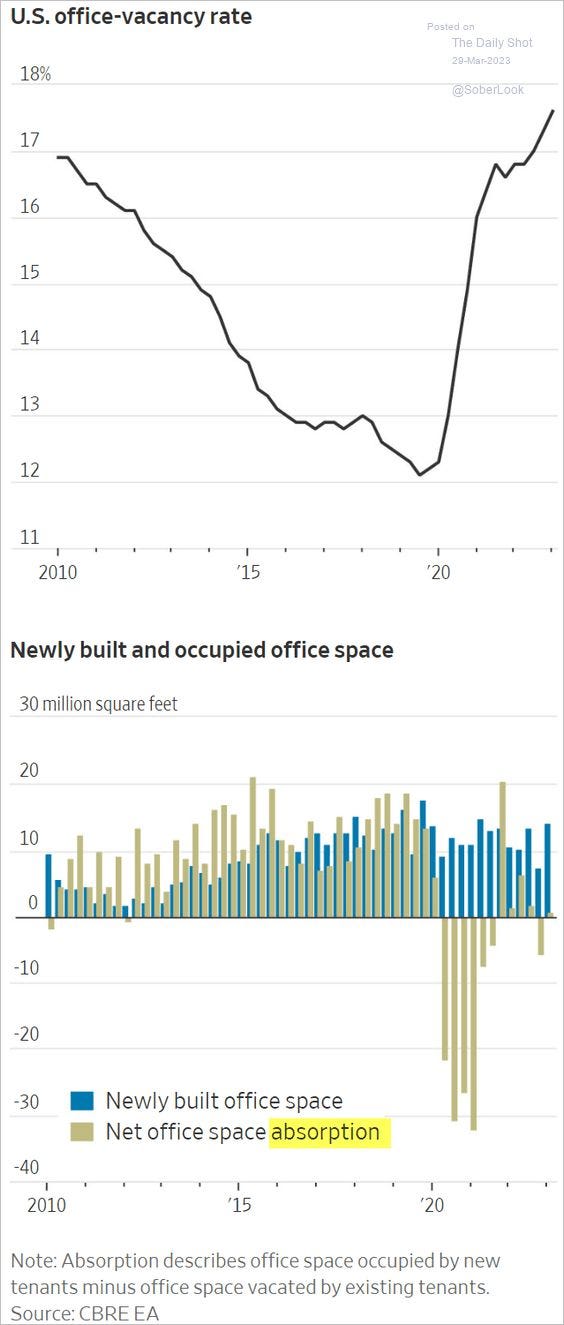Welcome! I’m Sarah Connor and this is my investing and careers newsletter. If you’re new, please subscribe below:
Now, let’s get to it…
There is currently a big push to get people back into the office
The corporate spin speaking points go something like this:
“We do better work when we’re together”
“People collaborate more when they are in the office.”
“The energy is higher when people are together.”
“We need to be together to build our culture.”
The culture:
Notice how all these arguments are totally subjective and unmeasurable? Not a very business-like way to make decisions, I’d say.
Is WFH more productive?
What they don’t tell you is how much productivity increased during 2020-2021 when most people were working from home. Mid-2021, most executives would have agreed that WFH was a success and they were open to new ways of working. Indeed, because of a shortage of workers many companies touted their WFH policy as a benefit to attract and keep employees.
Research backs this up:
A two-year study published in February 2021 of 3 million employees at 715 U.S. companies, including many from the Fortune 500 list, showed that working from home improved employee productivity by an average of 6 percent.
Another survey of 800 employers found that 94 percent of employers said their employees were just as productive or even more productive while working remotely. (Source)
Obviously, some jobs can’t be done at home. I’m not referring them.
The pandemic proved that a wide variety of knowledge workers could achieve their goals while working from home. In fact, workloads INCREASED for many during the pandemic as companies took advantage of the extra 2+ hours a day gained because workers no longer had to commute, chat about the weather or search for empty toilet stalls.
So why are executives today fighting to get staff back in the office?
1) Executives are projecting
Executives - and the executive role - are different.
The executive role is to network, meet, discuss, present, schmooze, delegate, manage, etc. and much of that is in-person work. So executives voluntarily go into the office because of the nature of their jobs. Seeing the office half-empty, they wonder why “they’re the only ones working”.
They get lonely. Executives are people too.
OK, the executives know their staff is at home. But, given the nature of their own role, executives can’t imagine how their staff functions remotely.
Many executives have lost touch with what heads-down work requires. Deep work requires quiet, contemplation and concentration - something that can’t be obtained in an open office.
Also, many executives are naturally outgoing and fail to respect that many of their staff are introverted or don’t want to network and climb the corporate ladder.
2) Executives are being prompted by greater forces
While I don’t have evidence, there are rumors that companies are being pressured to re-fill vacant office space. The office vacancy rate (see chart below) is undermining cash flows for office property owners and commercial mortgage lenders. Coupled with a higher cost to service debt - due to higher interest rates - the threat could eventually reach crisis levels. Property owners and lenders have a interest in getting people back into offices.
Municipalities also want people back in the office, as tax revenues are often dependent on dense use of residential and commercial real estate. Moreover, the knock-on benefits of a vibrant office core include a safer downtown, support for local small businesses (e.g. restaurants) and more profitable public transit.
The uphill battle for WFH employees
Let’s be real. This is probably an uphill battle for employees who wish to remain fully remote. As the economy deteriorates, employers will increasingly gain the upper hand and any new hires will have to bend to their wishes.
Unless you want to be a pain in the a$$, it’s probably best not to fight too hard. Make the case - consider what would resonate with your employer - but manage your expectations and be prepared to compromise.


